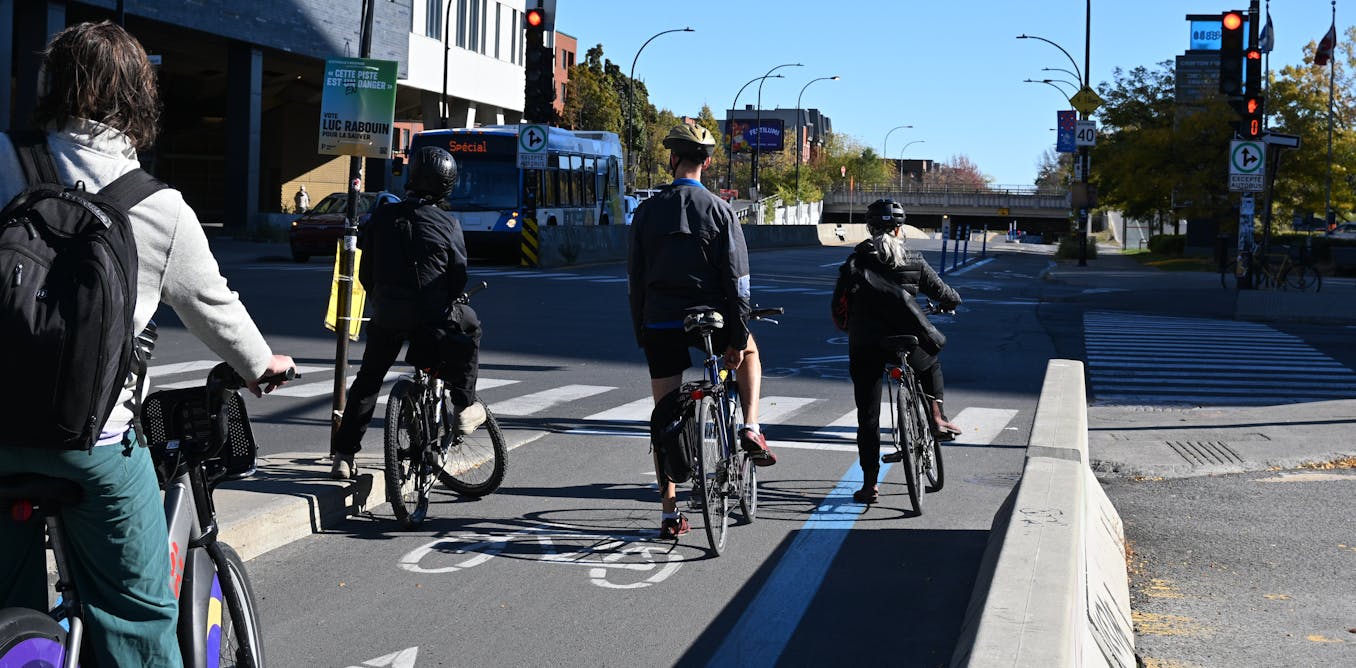The title is a bit clickbait-y. I went into this one feeling strongly opposed it. Afterwards I’m still not sure, but I get that there’s some nuance to it.
Relevance:
In Québec and other parts of Canada, discussions are underway to adopt such regulations.
Author: Steve Lorteau | Long-Term Appointment Law Professor, L’Université d’Ottawa/University of Ottawa
Excerpts:
Interactions between different users on roads are often a source of frustration, the most prominent being those between motorists and cyclists.
For example, many motorists are frustrated when they see bicycles cross an intersection without coming to a complete stop, which drivers are required to do.
As a professor of law at the University of Ottawa who specializes in urban law issues, I have studied various regulatory approaches that have been adopted around the world, each with different advantages and disadvantages.
The uniform application of traffic rules may seem fair, but in reality, it can create a false sense of equality.
On the one hand, the risks associated with different modes of transport are incommensurate. A car that runs a red light can cause serious or even fatal injuries. A cyclist, on the other hand, is unlikely to cause the same degree of damage.
Furthermore, the efficiency of cycling depends on maintaining speed. Having to stop completely over and over discourages people from cycling, despite its many benefits for health, the environment and traffic flow.
Treating two such different modes of transport the same way, therefore, amounts to implicitly favouring cars, something akin to imposing the same speed limit on pedestrians and trucks.
Since 1982, cyclists in Idaho have been able to treat a stop sign as a yield sign and a red light as a stop sign. Several American states (such as Arkansas, Colorado, and Oregon) and countries, such as France and Belgium, have adopted similar regulations.
In Québec and other parts of Canada, discussions are underway to adopt such regulations.
It’s important to note that the goal of the Idaho stop rule is not to legalize chaos on the roads. Cyclists must still yield to cars ahead of them at stop signs, as well as to pedestrians at all times, and may only enter the intersection when it is clear.



The unfairness problem imo is a problem because many places don’t have exclusions for bikes. I’m not Canadian so idk if that’s true there.
Both cars and bikes have to obey the rules, even in situations where it is obvious that not obeying them would be better (for example running a red light in the middle of nowhere where you have clear visibility that there are no humans around).
And there are some rules that are obviously thought only for cars, so the bikes think that they can break them.
As a car this is seems as unfair because they can’t break the rules even if they think there’s no danger.
If the rule just says “this rule doesn’t apply to bikes” imho it would be seen as fair-er by cars.